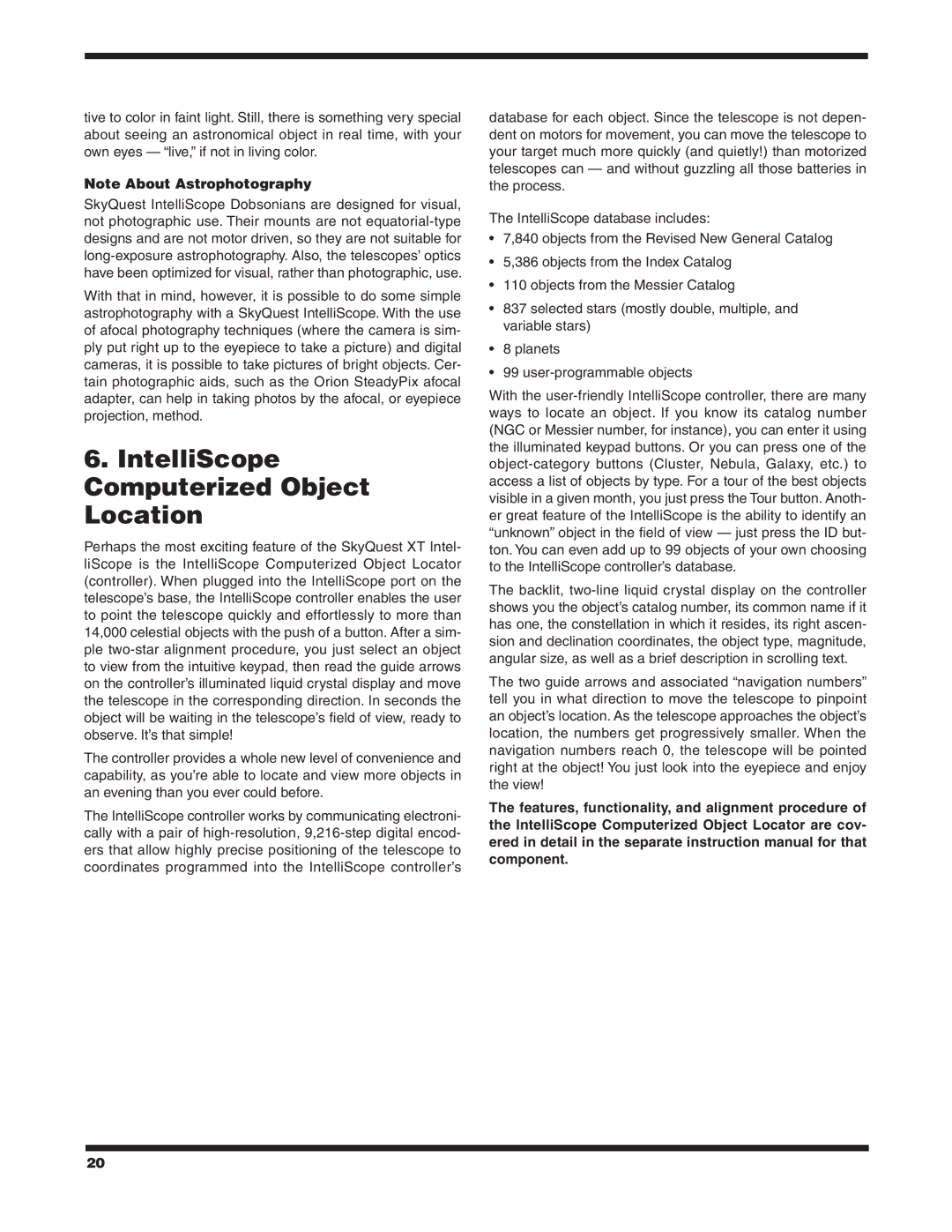
tive to color in faint light. Still, there is something very special about seeing an astronomical object in real time, with your own eyes — “live,” if not in living color.
Note About Astrophotography
SkyQuest IntelliScope Dobsonians are designed for visual, not photographic use. Their mounts are not
With that in mind, however, it is possible to do some simple astrophotography with a SkyQuest IntelliScope. With the use of afocal photography techniques (where the camera is sim- ply put right up to the eyepiece to take a picture) and digital cameras, it is possible to take pictures of bright objects. Cer- tain photographic aids, such as the Orion SteadyPix afocal adapter, can help in taking photos by the afocal, or eyepiece projection, method.
6.IntelliScope Computerized Object Location
Perhaps the most exciting feature of the SkyQuest XT Intel- liScope is the IntelliScope Computerized Object Locator (controller). When plugged into the IntelliScope port on the telescope’s base, the IntelliScope controller enables the user to point the telescope quickly and effortlessly to more than 14,000 celestial objects with the push of a button. After a sim- ple
The controller provides a whole new level of convenience and capability, as you’re able to locate and view more objects in an evening than you ever could before.
The IntelliScope controller works by communicating electroni- cally with a pair of
database for each object. Since the telescope is not depen- dent on motors for movement, you can move the telescope to your target much more quickly (and quietly!) than motorized telescopes can — and without guzzling all those batteries in the process.
The IntelliScope database includes:
•7,840 objects from the Revised New General Catalog
•5,386 objects from the Index Catalog
•110 objects from the Messier Catalog
•837 selected stars (mostly double, multiple, and variable stars)
•8 planets
•99
With the
The backlit,
The two guide arrows and associated “navigation numbers” tell you in what direction to move the telescope to pinpoint an object’s location. As the telescope approaches the object’s location, the numbers get progressively smaller. When the navigation numbers reach 0, the telescope will be pointed right at the object! You just look into the eyepiece and enjoy the view!
The features, functionality, and alignment procedure of the IntelliScope Computerized Object Locator are cov- ered in detail in the separate instruction manual for that component.
20
